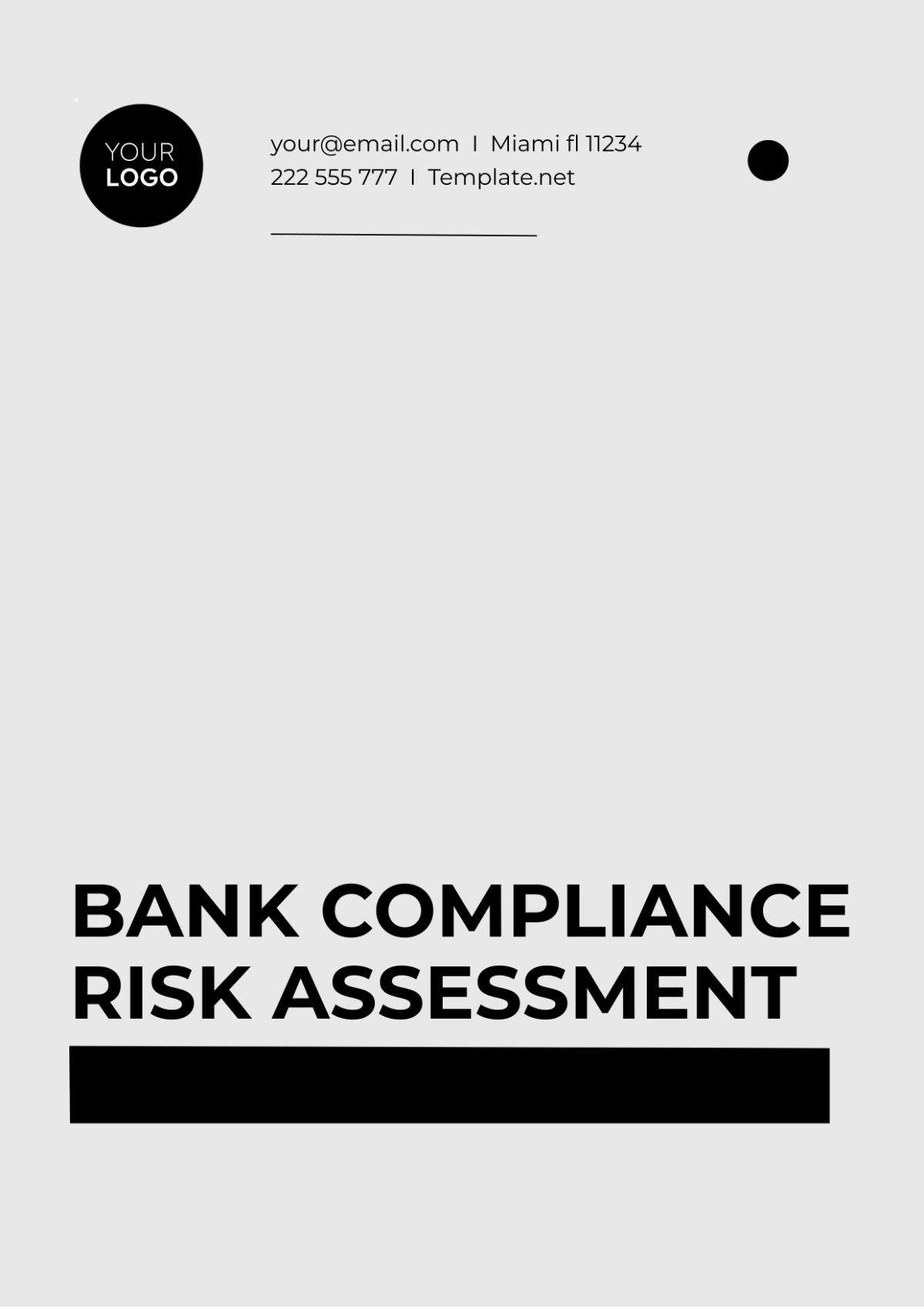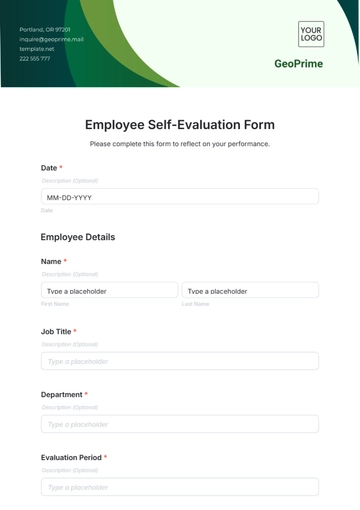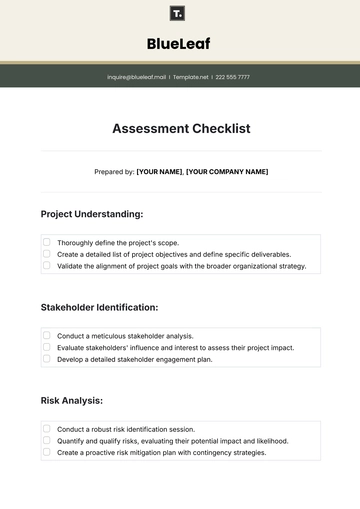Free Bank Compliance Risk Assessment

1. Introduction
The purpose of this Compliance Risk Assessment is to systematically evaluate potential risks that the bank may encounter regarding its compliance with regulations, laws, and internal policies. By identifying, analyzing, and prioritizing compliance risks, the bank aims to ensure adherence to legal requirements and industry standards.
2. Scope
This assessment covers all areas of the bank's operations, including but not limited to:
Regulatory Compliance
Anti-Money Laundering (AML)
Know Your Customer (KYC) procedures
Data Privacy
Consumer Protection
Internal Policies and Procedures
3. Risk Identification
3.1 Regulatory Compliance
Ensure compliance with all relevant laws and regulations governing banking operations.
Identify specific regulations applicable to the bank's jurisdiction and operations.
Evaluate the impact of regulatory changes on existing processes and procedures.
3.2 Anti-Money Laundering (AML)
Assess the effectiveness of current AML policies and procedures.
Identify high-risk customers and transactions.
Evaluate the adequacy of AML training provided to staff.
3.3 Know Your Customer (KYC)
Review KYC procedures to ensure thorough customer due diligence.
Assess the accuracy and completeness of customer information collected.
Identify potential red flags indicating suspicious activity.
3.4 Data Privacy
Ensure compliance with data protection laws and regulations.
Assess data handling practices to prevent unauthorized access or disclosure.
Identify risks associated with third-party data processors.
3.5 Consumer Protection
Review consumer-facing policies to ensure transparency and fairness.
Assess complaint handling procedures to ensure timely resolution.
Identify potential risks related to misleading advertising or product disclosures.
3.6 Internal Policies and Procedures
Evaluate the effectiveness of internal controls to mitigate compliance risks.
Identify gaps or inconsistencies in policies and procedures.
Assess the adequacy of staff training on internal policies and procedures.
4. Risk Analysis
For each identified risk, conduct a thorough analysis to determine:
Likelihood of occurrence
Potential impact on the bank
Existing controls and mitigation measures
5. Risk Prioritization
Prioritize risks based on the severity of their potential impact and likelihood of occurrence. Allocate resources accordingly to address high-priority risks promptly.
6. Risk Mitigation
Develop and implement action plans to mitigate identified risks. Ensure that mitigation strategies are effective, feasible, and aligned with the bank's overall objectives.
7. Monitoring and Review
Establish mechanisms for ongoing monitoring and review of compliance risks. Regularly assess the effectiveness of mitigation measures and adjust strategies as necessary to address emerging risks.
8. Conclusion
The key findings from the risk assessment should be concisely synthesized and a summary produced. This will help with understanding the main risks and potential issues that the bank may be facing and will act as a foundation for planning an effective response. Following the summary of key findings, a detailed outline must be created, specifying the next actions that need to be taken to enhance adherence practices within the bank. This plan should be thorough and clear, presenting a strategic roadmap to boost compliance and minimize risk-related challenges.
9. Signature
By signing below, you acknowledge that you have reviewed and understand the contents of this compliance checklist.

Compliance Officer
[Your Company Name]
Date: [Date]
- 100% Customizable, free editor
- Access 1 Million+ Templates, photo’s & graphics
- Download or share as a template
- Click and replace photos, graphics, text, backgrounds
- Resize, crop, AI write & more
- Access advanced editor
Discover peace of mind with our Bank Compliance Risk Assessment Template, available exclusively on Template.net. Crafted for efficiency, it's more than a template; it's a game-changer. Seamlessly editable and customizable, tailor it to your needs effortlessly. Dive into precision and elevate your risk assessment process today. Editable in our Ai Editor Tool for unparalleled convenience.





























